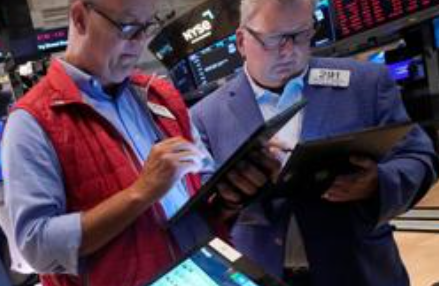For 2½ years, high inflation has been the primary focus of the Federal Reserve and the White House. But recent data, including a lackluster July hiring report, has shifted concerns to the labor market.
Fed officials have aimed to reduce inflation without causing significant economic weakness, achieving a so-called soft landing. Chicago Fed President Austan Goolsbee noted, “Now the question is whether we are settling at full employment, or whether we are blowing through full employment.”
Lousy Jobs Report Forces Fed to Reckon With Hard Landing https://t.co/8K8fcX5mnj
— Chad Moutray (@chadmoutray) August 4, 2024
A broader economic slowdown could impact the upcoming presidential race between former President Donald Trump and Vice President Kamala Harris. Economist Marc Sumerlin said, “If the economy rolls over, the odds of Harris becoming president would dwindle.”
Fed Chair Jerome Powell signaled a rate cut was likely at next month’s meeting. Inflation has fallen from a high of 7.1% two years ago to 2.5% in June. Meanwhile, the unemployment rate rose to 4.3% in July from 4.1% in June.
“Inflation is no longer the issue,” said former Fed governor Laurence Meyer. Investors are concerned the Fed is running late. The debate now is whether the rate cut should be a quarter-point or a half-point.
Some economists believe the Fed needs to act faster to avoid a downturn. Interest rates were raised last year to slow economic growth. If the economy is slowing more than expected, the Fed will need to lower rates closer to a neutral level.
A bond-market rally has already lowered borrowing costs. The average 30-year mortgage rate dropped to 6.4% from 6.86% a week earlier. This might boost housing demand and cushion economic softness.
However, job-market weakness could be masked as companies hesitate to lay off workers they struggled to rehire post-pandemic. A significant stock-market downturn could trigger more layoffs and reduced investments.
Facing weaker growth, the European Central Bank and the Bank of Canada cut rates in June, joined by the Bank of England this past week. Negative economic news and stock-market turmoil could hurt Harris’s campaign. Voters tend to punish incumbents during economic downturns.
While an unemployment rate below 5% is historically low, recent trends are concerning. President Barack Obama was re-elected in 2012 with an unemployment rate just below 8%, down from 10% three years earlier. Democrats lost the White House in 2000 and 2016 despite low unemployment rates.
America’s robust post-pandemic job market is teetering on the brink after a lousy July hiring report in which the unemployment rate shot up to 4.3%, a three-year high. https://t.co/OzdRXhXvHM
— WKOW 27 News (@WKOW) August 4, 2024
Higher unemployment would allow Republicans to attack on both economic and employment fronts. Trump’s campaign called Friday’s data evidence of “a looming recession.”
Still, the labor market isn’t weak. Unfilled jobs outnumber unemployed workers, and layoffs are subdued. President Biden noted that nearly 16 million jobs have been created since he and Harris took office. The Harris campaign declined to comment further. Even though we know these are jobs that were lost in the so-called pandemic, American citizens are losing full time jobs now. In this past year they lost over 1.5 million jobs that are full time. Illegals gained 1.4 million jobs.
Key Points:
i. Shift in Focus: The U.S. labor market has become the primary concern for economic policymakers, moving away from the previous focus on high inflation.
ii. July Hiring Report: The latest jobs report showed a lackluster performance, with only 114,000 jobs added and the unemployment rate rising to 4.3%.
iii. Fed’s Response: The Federal Reserve, led by Jerome Powell, signaled a potential rate cut in response to the economic slowdown, aiming for a “soft landing” without causing a recession.
iv. Political Implications: The economic slowdown could impact the presidential race between former President Donald Trump and Vice President Kamala Harris, with the economy being a crucial factor for voters.
v. Market Reactions: The bond market rallied in anticipation of Fed cuts, lowering borrowing costs, but a sustained stock-market downturn could further challenge the economy.
Conner T – Reprinted with permission of Whatfinger News



